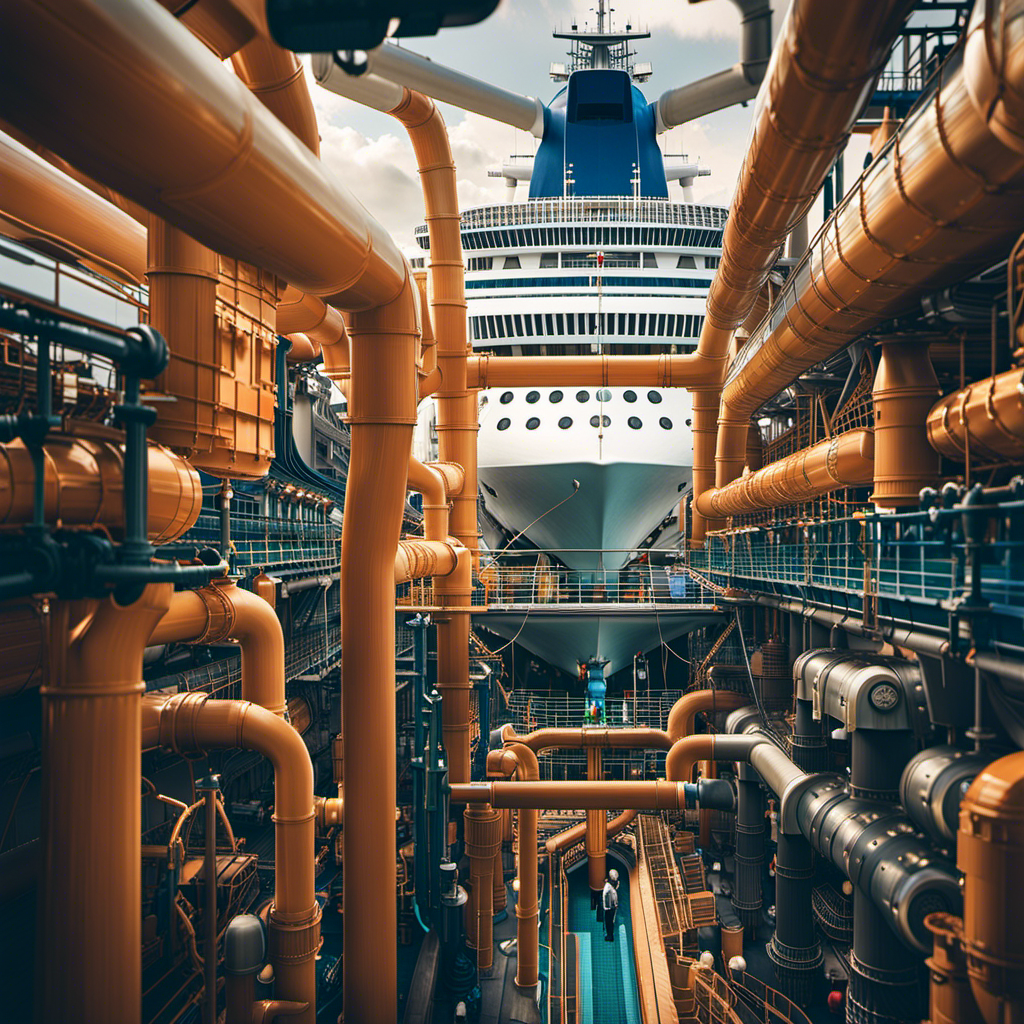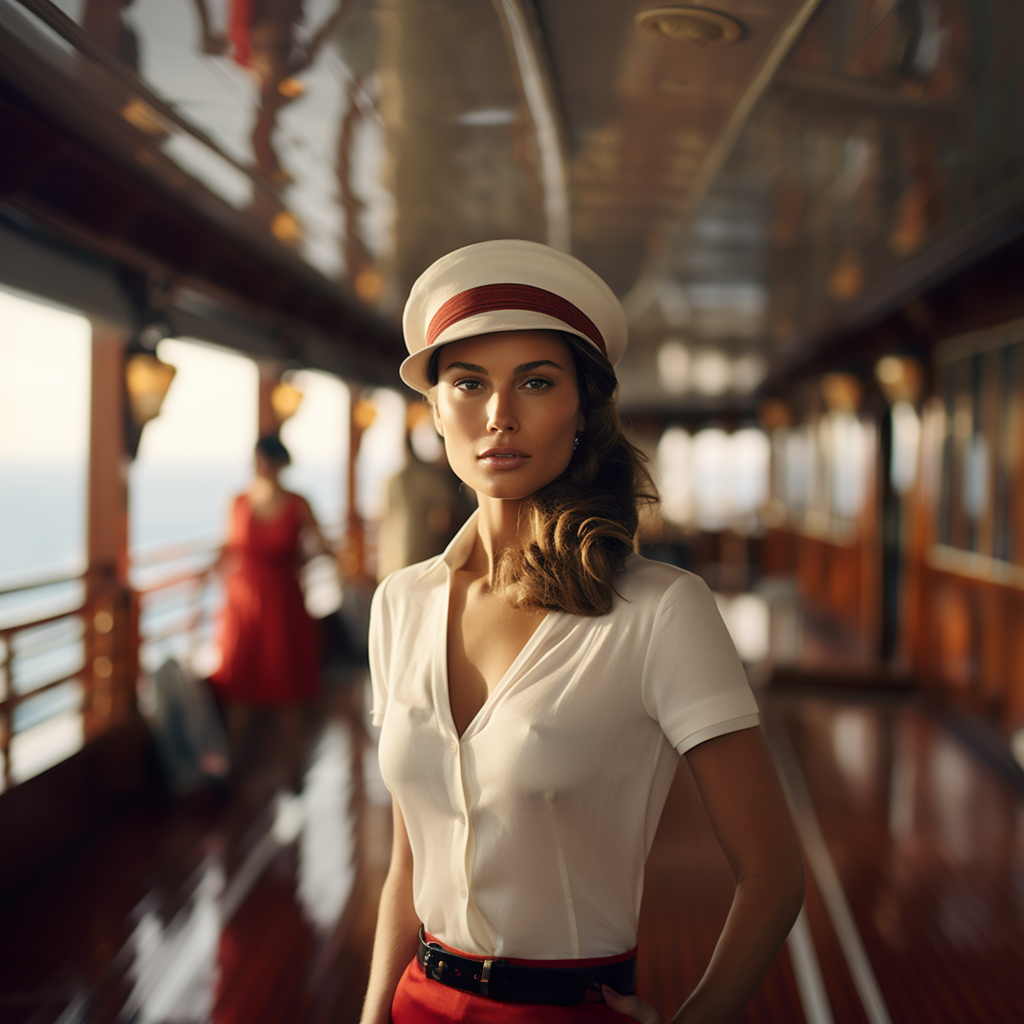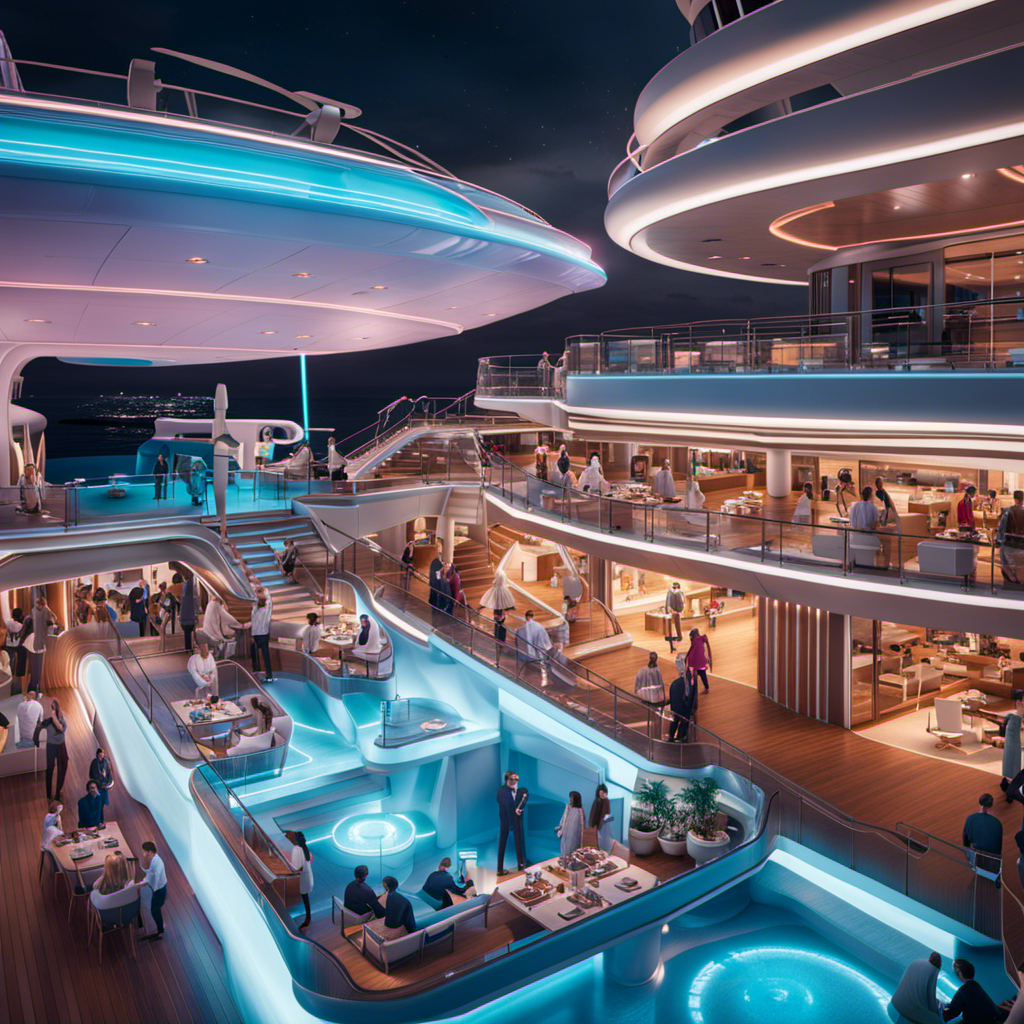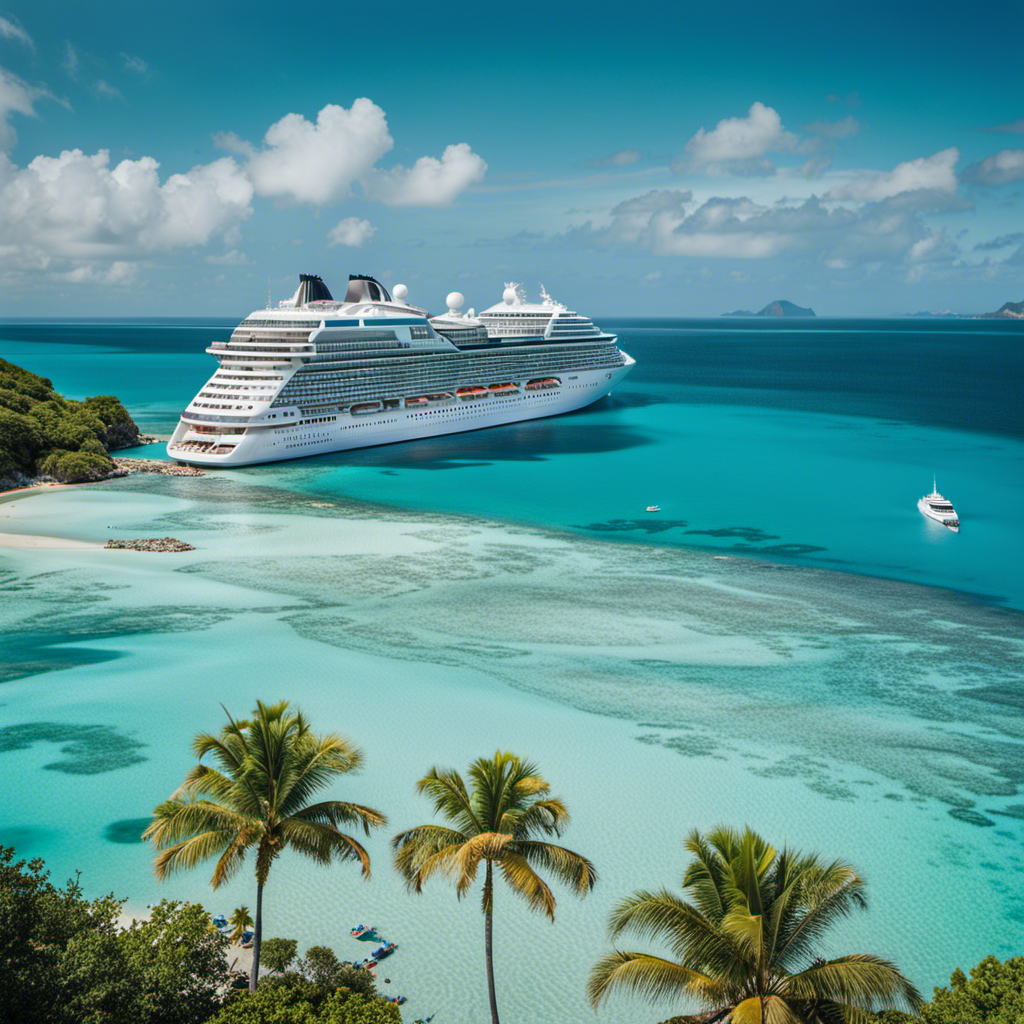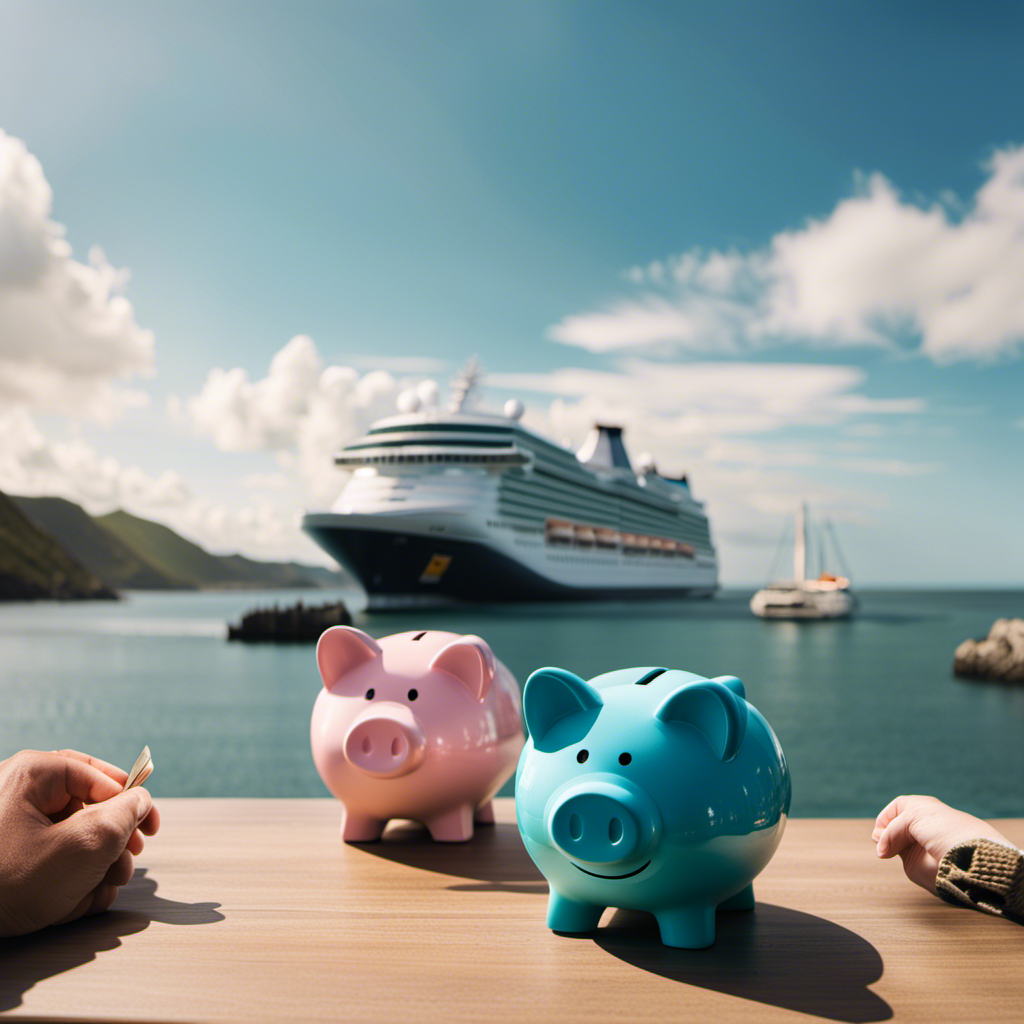Have you ever wondered what happens to all the waste you produce during a cruise? Let me shed some light on this fascinating topic. As someone who travels, understanding how the cruise industry handles wastewater to ensure a safe and environmentally friendly voyage is essential. So, let’s dive deeper into this discussion!
First off, the wastewater generated from toilets and showers goes through a meticulous treatment process before being discharged. The International Convention for the Prevention of Pollution from Ships (MARPOL) sets strict regulations for cruise ships, ensuring that they follow proper procedures. The wastewater is collected in ballast tanks and then separated into two categories – gray water and black water.
Black water, which comes from toilets and contains harmful components, undergoes a comprehensive treatment process in a sewage treatment facility onboard. It goes through filters, aeration chambers where bacteria decompose it, and settlement chambers where heavy materials sink. After sterilization, the remaining water is stored until it can be safely discharged.
On the other hand, gray water, which comes from showers and laundries, may or may not be processed with black water. It is typically discharged when the ship is far from land, although some areas, like Alaska, have specific restrictions on gray water discharge.
Rest assured, the cruise ship industry takes significant measures to ensure that wastewater is treated in the cleanest possible way, protecting the environment and ensuring a pleasant experience for all passengers.
Key Takeaways
- Cruise ships can accommodate thousands of passengers who expect clean and well-maintained staterooms with private toilets and showers.
- On average, a person uses 40 to 50 gallons of water per day on a cruise ship, and a small cruise ship on a transatlantic sailing can produce almost 3000 tons of wastewater.
- Cruise ships collect wastewater in ballast tanks and separate it into gray water (from showers and laundries) and black water (from toilets).
- Black water undergoes a sewage treatment process that includes filtration, aeration, settlement, sterilization, and storage until allowed for discharge. Gray water may or may not be processed with black water and is usually discharged when far from land, although some areas may have restrictions on gray water discharge.
Wastewater Collection and Separation
When I flush the toilet on a cruise ship, the wastewater is collected in ballast tanks and then separated into gray water and black water. This wastewater management system is crucial for ensuring the environmental impact of cruise ship operations is minimized.
Gray water, which comes from showers and laundries, can be reused in environmentally friendly homes, reducing the overall water consumption. On the other hand, black water, which comes from toilets and contains harmful components, undergoes a rigorous treatment process. It is first filtered to remove large particles before entering an aeration chamber where bacteria decompose it. Air blowers provide oxygen to the bacteria, aiding in the decomposition process.
The sewage then moves to a settlement chamber where heavy materials sink and water floats. Dense materials can be sent back to the aeration chamber or removed for incineration. Finally, the remaining water undergoes sterilization through chlorination or UV treatment, ensuring its safety before storage and eventual discharge.
Through these wastewater management techniques, cruise ships strive to minimize their environmental impact and maintain clean and well-maintained facilities for their passengers.
Black Water Treatment Process
After flushing the toilet on a cruise ship, the black water undergoes a sewage treatment process. Black water disposal is a critical aspect of maintaining the cleanliness and environmental sustainability of cruise ships.
The treatment process starts with a filter that removes large particles from the sewage. Then, the sewage enters an aeration chamber where bacteria decompose it. To ensure optimal conditions for the bacteria, air blowers provide the necessary oxygen.
Next, the sewage moves to a settlement chamber where heavy materials sink and water floats. Dense materials can be sent back to the aeration chamber or removed for incineration. The remaining water undergoes sterilization through chlorination or UV treatment.
It is important to note that the treated water is safe but not suitable for drinking. It is stored until allowed for discharge, ensuring minimal environmental impact.
Gray Water Treatment and Discharge
I’ll discuss the treatment and discharge of gray water on a cruise ship. Gray water, which comes from showers and laundries, undergoes minimal treatment compared to black water. The main focus is on filtration to remove large particles from the water.
Once the filtration process is complete, the gray water can be discharged. However, whether or not it is processed with black water depends on the ship’s regulations. Some ships may choose to combine the two types of wastewater, while others may treat them separately.
When it comes to discharge, gray water is usually released when the ship is far from land. It is important to note that some areas, like Alaska, have restrictions on the discharge of gray water due to its potential environmental impact.
Reuse options for gray water in environmentally friendly homes are also being explored as a sustainable solution.
Chemical Usage and Considerations
Chemicals used in toilets on cruise ships must be carefully selected to ensure the preservation of helpful bacteria. Chemical safety is of utmost importance to protect the environment and maintain the efficient functioning of onboard waste treatment systems. Here are some key considerations:
-
Choose biodegradable chemicals: Opt for products that are environmentally friendly and easily break down during the treatment process.
-
Avoid harsh chemicals: Harsh chemicals can harm the bacteria responsible for breaking down waste in the sewage treatment facility.
-
Regular monitoring: Conduct regular tests to ensure that chemical levels are within acceptable limits and not detrimental to the treatment process.
-
Educate passengers: Provide information to passengers about the use of non-toxic personal care products to minimize the introduction of harmful chemicals into the system.
By following these guidelines, cruise ships can effectively manage waste while minimizing the environmental impact of chemical usage.
Cleanest Form of Water and Discharge
The cleanest form of water on a cruise ship is discharged into the sea. The black water, which comes from toilets and undergoes a thorough sewage treatment process, is considered the cleanest form of water onboard. The treatment process for black water includes filtration, aeration, settlement, and sterilization. These steps effectively remove harmful components and ensure that the treated water is safe.
However, gray water, which comes from showers and laundries, may or may not be processed with black water depending on the ship. Gray water treatment is minimal, usually involving simple filtration to remove large particles. As a result, gray water may not be as clean as black water and is usually discharged when the ship is far from land.
It is important to note that some areas, like Alaska, have restrictions on the discharge of gray water due to environmental concerns. Therefore, while black water treatment offers advantages, limitations exist for gray water discharge.
Frequently Asked Questions
How much water does the average person on a cruise ship use per day?
On a cruise ship, the average person uses a staggering amount of water per day. To put it in perspective, it’s like a never-ending waterfall pouring out of the faucets. This excessive water usage has a significant impact on the environment, which is why water conservation tips are crucial.
What are the harmful components found in black water?
The harmful components found in black water on a cruise ship include bacteria, viruses, and other pathogens. These components can have a significant environmental impact if not properly treated and disposed of.
What happens to the dense materials that sink in the settlement chamber during the black water treatment process?
During settlement chamber maintenance, dense materials that sink in the black water treatment process can be sent back to the aeration chamber or removed for incineration. This ensures optimal waste treatment efficiency and prevents clogging or blockages.
Are there any restrictions on the discharge of gray water in certain areas?
Yes, there are restrictions on the discharge of gray water in certain areas. Gray water regulations vary by location and some areas, like Alaska, prohibit or limit gray water discharge due to environmental impacts.
How do cruise ships ensure the preservation of helpful bacteria in their toilets while using chemicals?
Preservation techniques are crucial to maintain bacterial balance in cruise ship toilets. By carefully selecting chemicals, cruise ships ensure the preservation of helpful bacteria. This helps maintain the effectiveness of the sewage treatment process and promotes environmental sustainability.
Meet Asra, a talented and adventurous writer who infuses her passion for exploration into every word she writes. Asra’s love for storytelling and her insatiable curiosity about the world make her an invaluable asset to the Voyager Info team.
From a young age, Asra was drawn to the power of words and their ability to transport readers to far-off lands and magical realms. Her fascination with travel and cultures from around the globe fueled her desire to become a travel writer, and she set out on a journey to turn her dreams into reality.

